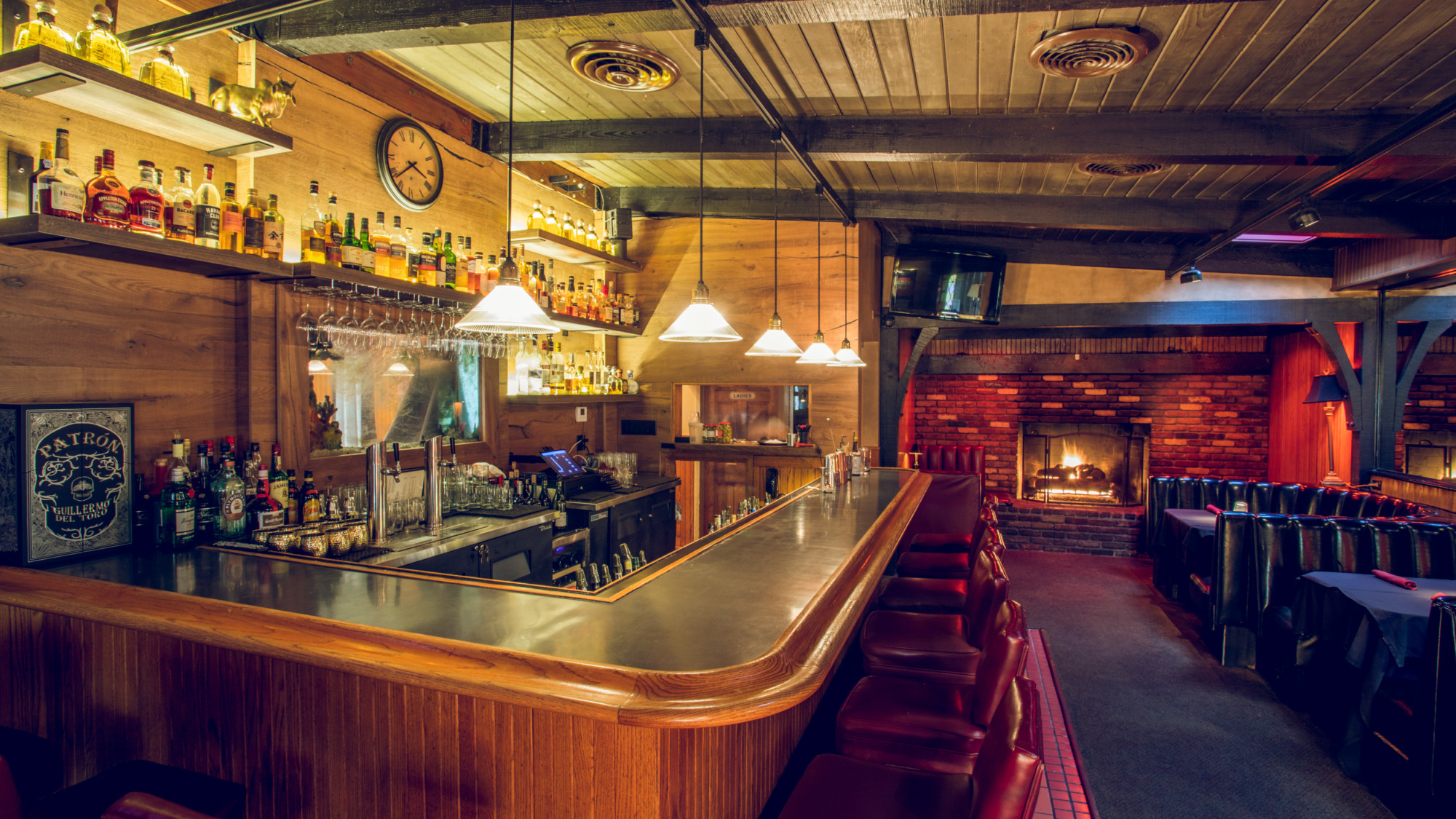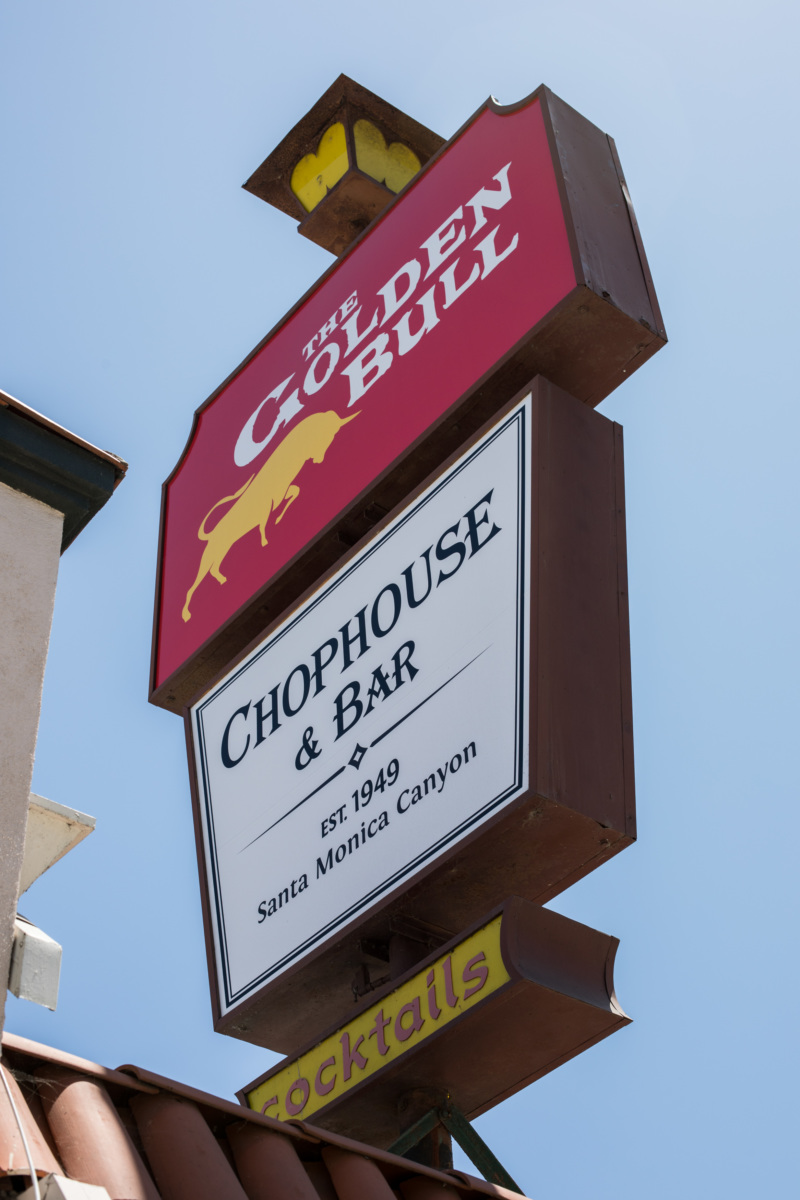
The Golden Bull Has Been a Cornerstone for Santa Monica Canyon and the LGBTQ Community
Tennessee Williams, Truman Capote, author Christopher Isherwood, and painter Don Bachardy walk into a bar.
This isn’t a joke. It’s one bygone night in the mid-1960s when the four men went to Santa Monica’s Golden Bull for dinner. Details of what must have been one fantastic, martini-fueled party are lost to time, the conversation billowed away in clouds of cigarette smoke and clinking glasses.
“If those walls could talk,” says Don Cranford, who owned The Golden Bull from 1986 to 2017. “It was definitely the place to be those years, especially for the gay crowd. The restaurant was very mixed with lots of actors and writers and artists living here in the Canyon. It was never meant to be an exclusively gay restaurant or anything, but they sort of took over the bar. It was just their hangout. Families went in the dining room door, gay people went to the bar. Everyone loved it.”
Long before the Stonewall Riots in New York, or the raids and protests at the Black Cat Tavern in Silver Lake, when West Hollywood wasn’t known as Boy’s Town yet, Santa Monica Canyon was one of the few pockets of openly gay life around Los Angeles. The beach-adjacent enclave filled with winding roads and steep canyon walls was somewhat secluded from the Hollywood studio machine, and it became a safe haven for the bohemian elite. Parties raged, people skinny-dipped at Will Rogers State Park and its gay-friendly patch of sand known as Ginger Rogers Beach, and many cocktails were had at bars and restaurants within walking distance. That fact that it bordered Pacific Palisades, founded by Methodists, made it all more salacious in a way.
According to the LGBTQ National Archives, the stories go as far back as the 1920s into the late 1930s, when creatives like Austrian screenwriter Salka Viertel, said to be the lover of Greta Garbo, and her husband Berthold settled in the neighborhood. Berthold taught screenwriting to Isherwood, who followed his mentor, the gay British philosopher Gerald Heard, to the Canyon. There were also brothels and speakeasies, and notorious house parties well into the 1960s and 1970s. The S.S. Friendship, a few doors away from The Golden Bull, with the bow of a boat as part of its facade, was a raucous watering hole. Cafe Caravelle, a French restaurant on the corner of Channel and the Pacific Coast Highway, turned into a piano bar after 10 p.m. and a frolicking after-party spot. At some point in any evening, everyone made it to the Bull for dinner or a drink.
“The Canyon was a pillar of debauchery,” says local historian, photographer and longtime Canyon resident Randy Young. “There was a brothel called The Golden Butterfly, known to attract people like Greta Garbo, who was supposedly having an affair with several women. Later, Isherwood really solidified the roots of the gay community. He had quite the coterie. He lived in four different houses around the neighborhood over the years and was an extraordinarily powerful presence.”


The Golden Bull was everything a neighborhood dive should be: A totally unassuming spot frequented mostly by locals, many slipping into their favorite table or seat at the bar for good steaks and even better martinis. Just the type of place someone like Ishwerwood could hold court with fellow famous writers like Capote and Williams.
In a 1952 Harper’s Bazaar article, Isherwood called the Canyon “our western Greenwich Village,” filled with “Bohemianism and unpretentious artiness.” He alluded to a bar similar to the Friendship in his novel “A Single Man” (in the Tom Ford-directed film starring Colin Firth, they used Santa Monica’s Chez Jay as a stand-in). Bachardy, Isherwood’s partner for more than 30 years, still lives and paints in the same house the two shared. The Canyon inspired them, and they in turn inspired many to flutter around the tree-lined streets, circling through their favorite local bars and restaurants.
The list of merrymakers, gay icons, and famous faces that reportedly hung out at The Golden Bull is long: David Hockney, Rock Hudson, Steve and Edie Gourmet, Phyllis Diller, Betty White, Bea Arthur, Steve McQueen, Peter Fonda all the way to brothers Luke and Owen Wilson. Cranford, who started working at The Golden Bull as a bartender in 1968, remembers most of them.
“Phyllis Diller would have a couple Beefeater martinis, and she’d practically put on a floor show in the dining room,” he recalls. “ I always felt everybody that worked at the Bull had great personalities and really got to know the customers. When I started working there, the waitresses were all older and wore white cowboy boots and short skirts. I learned more dirty words from those women. One server put herself through law school working there. I always joked that you could get a steak and a will done on the same night.”
The brick building on the corner of West Channel and Short Street had been a restaurant of some sort since the 1930s. In 1949 it became a Billingsley’s Golden Bull — there were several Billingsley’s around Los Angeles, including the original on Pico Boulevard, which still stands today. By the time Cranford made his way there for a job, it was already a permanent fixture for Canyon and Palisades locals. When the owner wanted to sell the place in the late 1980s, he figured he’d either have to buy it or find a new job. Cranford took over the business in 1986.
“Don really made the place,” says Mark Ryan, who manned the bar for almost 30 years. “Everyone who worked there stayed forever. Customers said they felt like it was going to a friend’s house. That was all because of Don. He welcomed everyone of every stripe over the years, rainbow flags and all.”
Enduring restaurants like The Golden Bull aren’t rare in Los Angeles, or even Santa Monica. But that it was a safe haven for the gay community, especially at a time when there weren’t as many options for men and women openly dining and drinking together, is significant.
After the massive Northridge earthquake in 1994, the original brick building collapsed to a rubble. It took Cranford two years to rebuild and reopen, and when he did, regulars eagerly filled their favorite seats, bar stools, and booths. He’ll tell you it’s just always been that way at the Bull, that he’s there for them, they for him. Still, after almost 50 years working at and owning the restaurant, it was time to get out. He sold the business to The Verge Group in 2017, which oversees it today.


Ask anyone who’s lived in the Canyon longer than a minute and they’ll tell you the neighborhood has changed over the years. Maybe it’s less bohemian now, younger. More turnover in the multi-million dollar houses and hot-ticket apartments means a diminishing population of long-standing regulars. The clientele who used to drink at the Bull during Isherwood’s reign are mostly gone, but it remains a neighborhood fixture. Survival is in its DNA.
Mark Verge, himself a longtime Santa Monica and Palisades resident, is doing all he can to make sure The Golden Bull continues its legacy. When his group took over, the dining room and bar were renovated slightly, and executive chef Greg A. Daniels came in to revamp the menu. It’s still steaks and chops, Caesar salads, shrimp cocktails, and icy martinis, just slightly elevated. The room is still full of history. The intention was never to change so much that lifers wouldn’t come back, but in order for it to remain, they needed to attract another new generation.
If floods and earthquakes couldn’t permanently take The Golden Bull down, the pandemic won’t either. With indoor dining and bars closed due to the coronavirus, the restaurant’s large parking lot has been converted to an elaborate outdoor dining room and lounge. For now, it’s nothing like the dark and cozy bar with its fireplace and dark leather booths. There are more families coming off the beach and weekend brunchers than late-night cocktails with Hollywood’s gay elite. But it’s still the Bull: All are welcome, gay, straight, singles, families, young people, old, everyone. And the martinis are perfect (even to go).
Cranford, who just turned 80, still lives next door. When he’s not riding his Harley out to Palm Springs, he stops into the restaurant from time to time. He wants to see it all, his legacy, the restaurant’s place in Santa Monica history, survive.
“Those were the best years of my life,” he says. “We served at least four generations of families from the Canyon and Palisades. It’s still a great restaurant. I hope it will go on forever.”

















